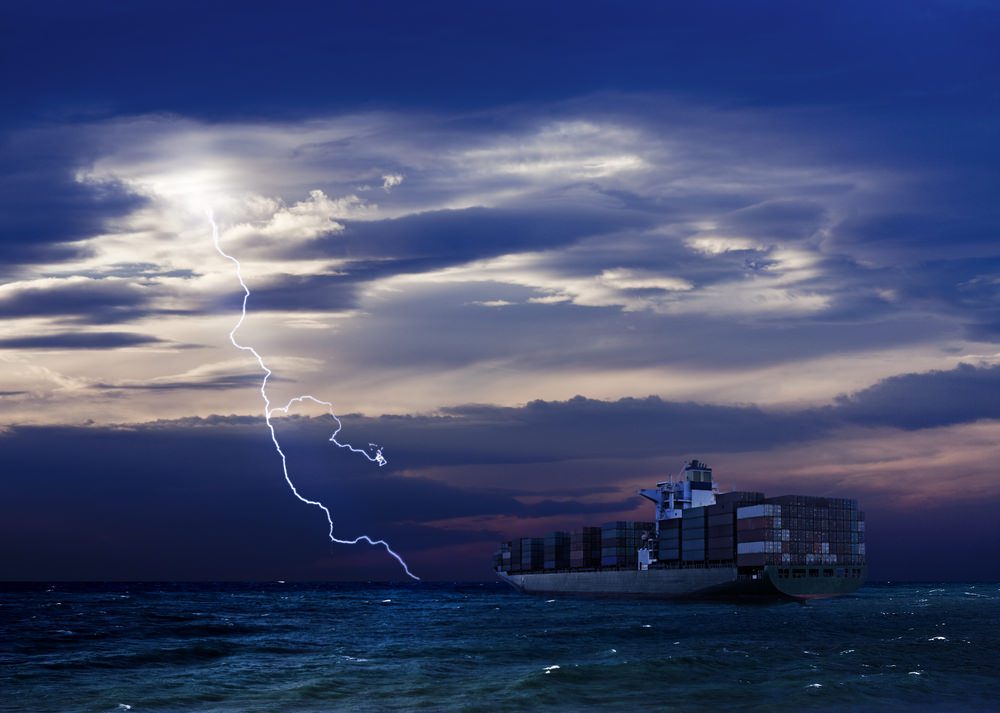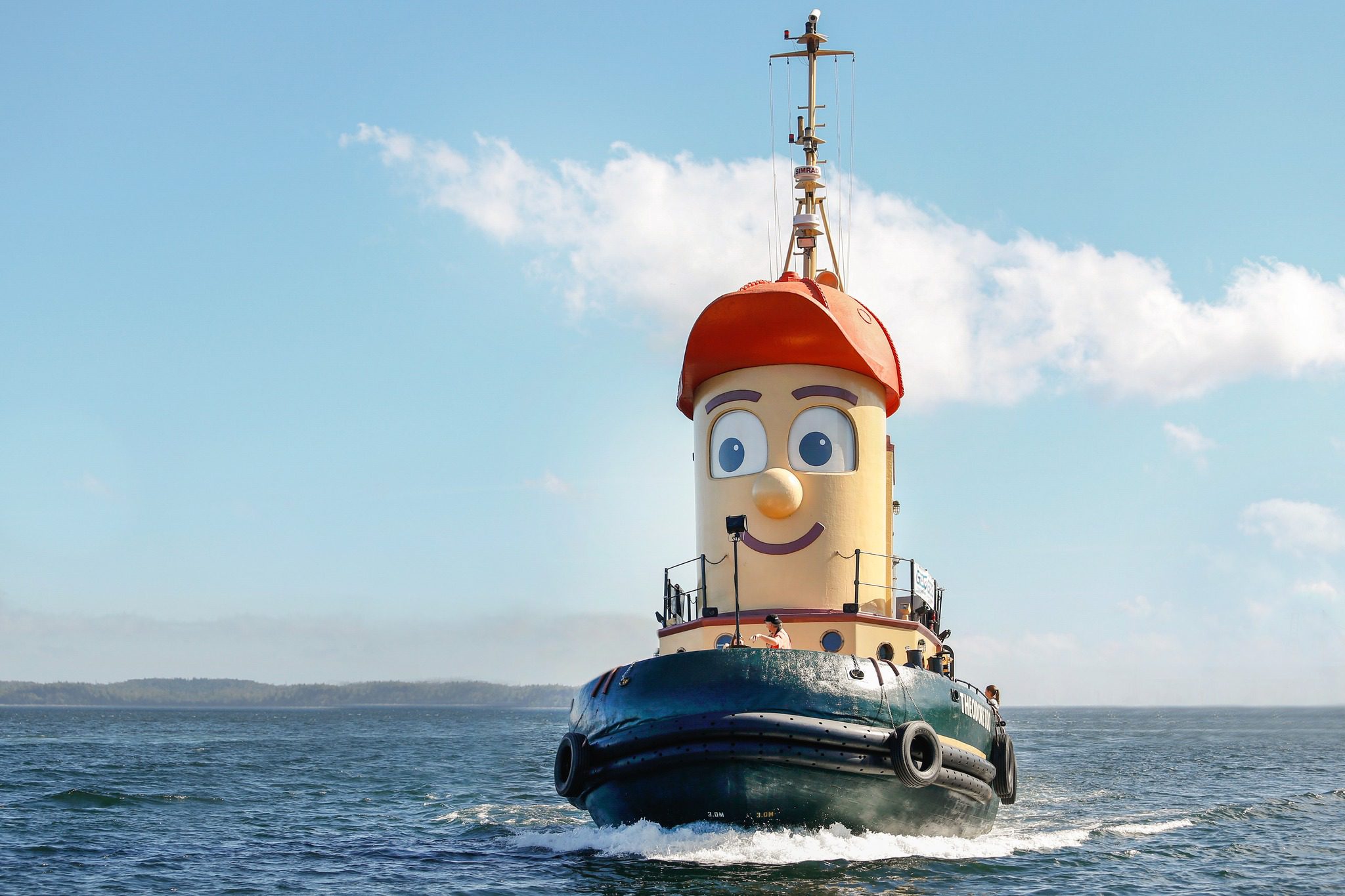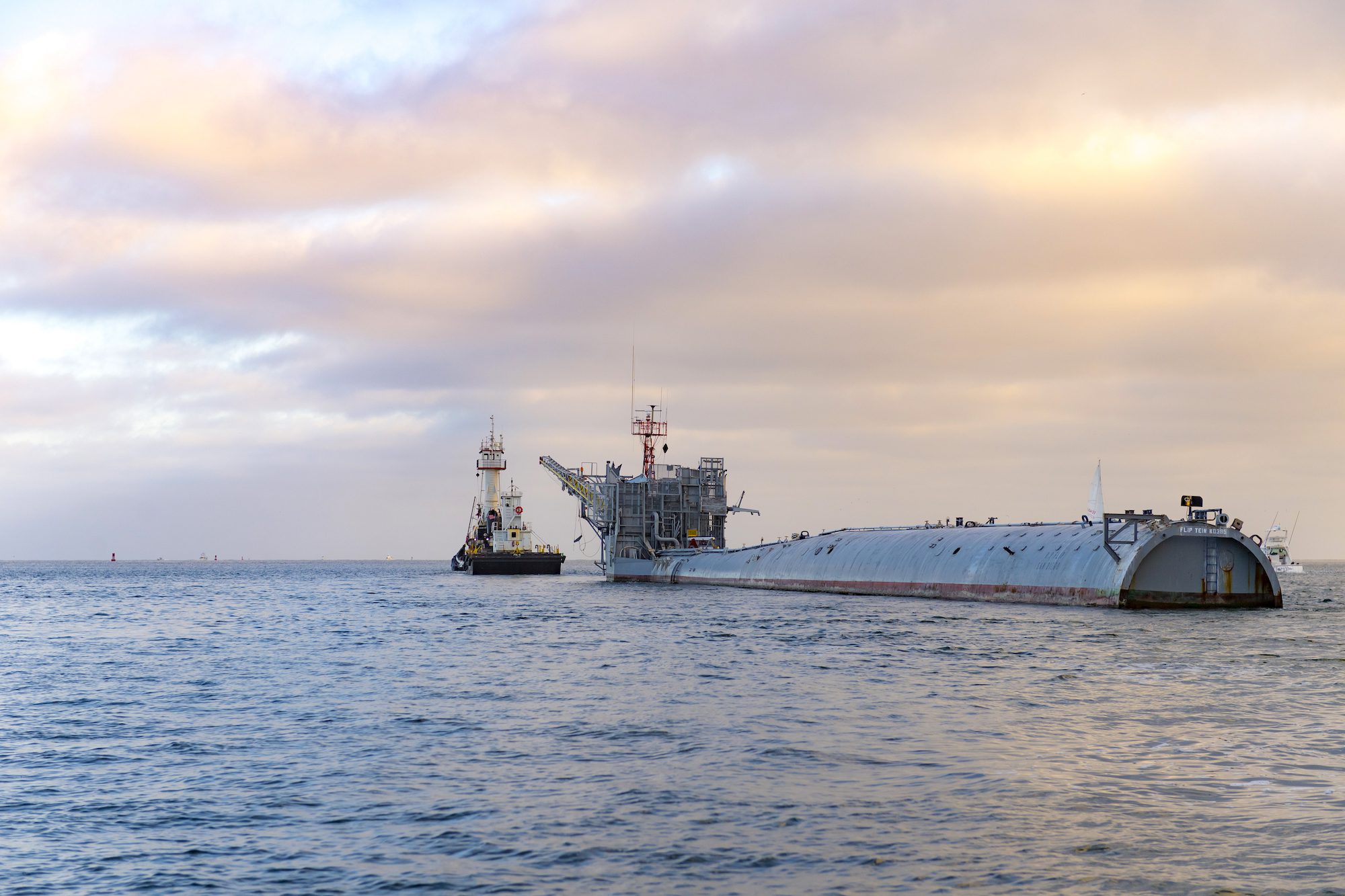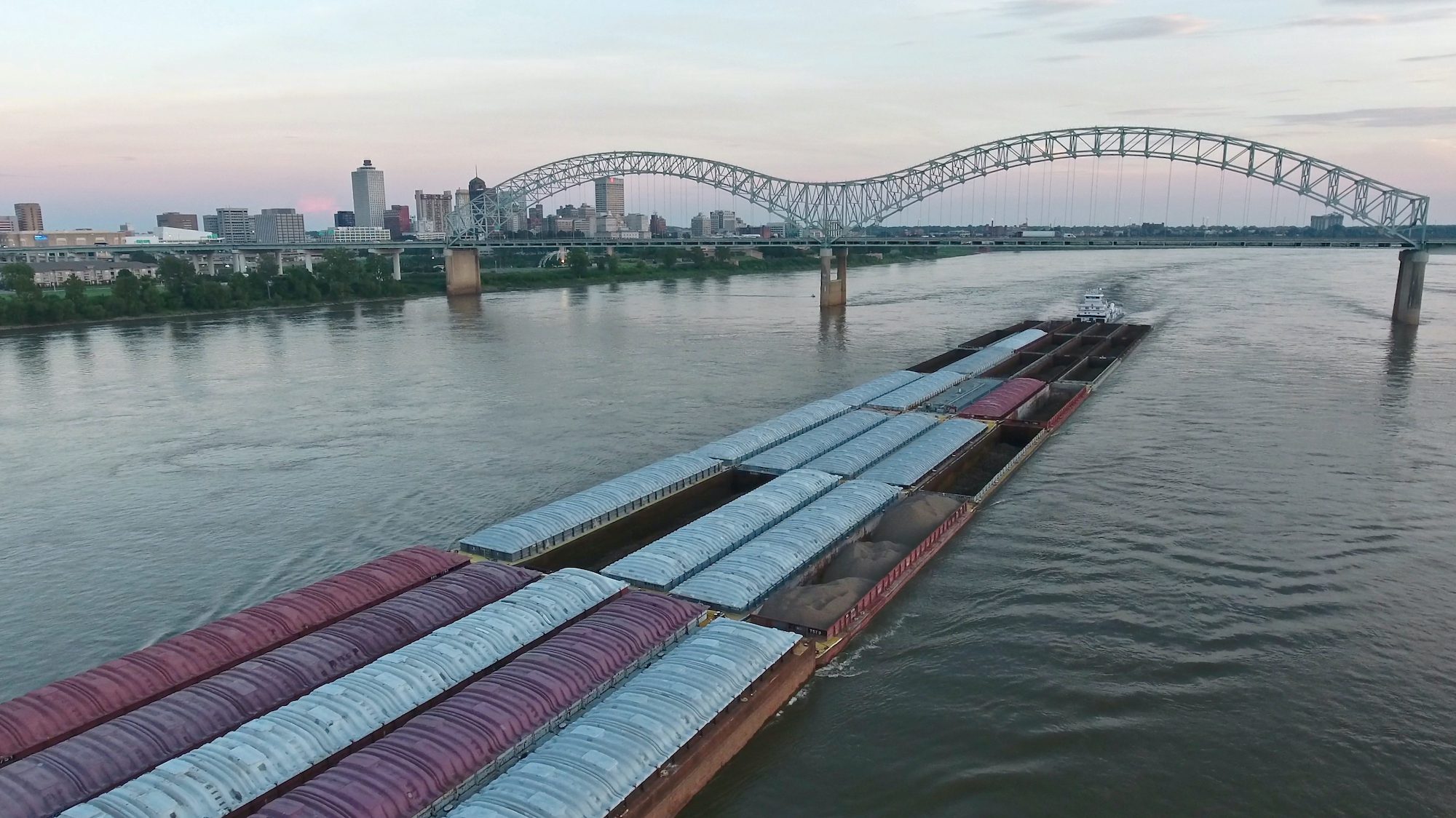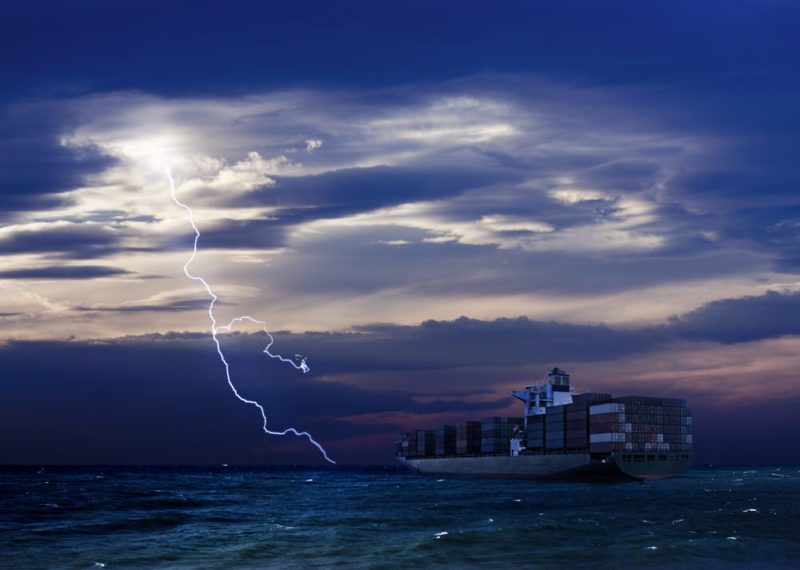
By Captain George Livingstone – One of my first columns of the year was on the state of the international maritime industry, I discussed a broad range of topics, one of which was a coming sea change in the world-wide manufacturing industry. I would like to focus on that.
History is replete with both ‘metaphorical’ and ‘real’ perfect storms. Is there is a common thread running through them all?
The fall of Rome
On a cold December morning in the year 410 A.D., the citizens of Rome awoke to find Alaric, King of the Visigoth’s and his army at their city gates, they were astounded, completely taken off guard. It was preposterous but none the less there he stood and ten centuries of Roman influence was about to descend into the chaos of the Dark ages.*
Sail to Steam
In 1819 when a Capt. Moses Rogers in association with Robert Fulton suggested the new build three masted ocean packet Savannah be fitted with a Fulton designed steam engine driven by iron paddle wheels there was deep skepticism and disbelief among the maritime community in general. In fact, the debate raged for five decades until put in its coffin by the likes of Samuel Cunard and other pioneers of the modern steamship. No amount of romance or affection was able to save commercial sailing vessels from the reality of a changing world.
Containerization
In 1956 when trucking magnet Malcom McLean’s converted World War Two, T-2 tanker Ideal X made its first voyage from Newark, NJ to Houston, Texas with 48 steel containers, few in the maritime community recognized the revolution that was upon them that would forever change sea trade in manufactured goods.
Super Tanker era
In 1960, the average sized Oil Tanker plying the world’s oceans was still the just mentioned World War Two, T-2 tanker at 532 feet long and 16,500 DWT. Few within the international tanker market at the time had any clue as to what was about to descend on them. By 1970 there was an entirely new class of tank ship, the VLCC (Very Large Crude Carrier) ranging about 100 times bigger in deadweight than the T-2.
The pinnacle (and nearly the end) of the world wide mania for Super Tankers might be the 1976 French built Batillus Class ULCC (Ultra Large Crude Carrier). At 1359 feet and 555,000 DWT, the class was beyond belief to most mariners of the day. Ship size changed so fast and so much that in 1968 Esso Oil started the world’s very first ‘manned model’ ship handling school in order that their masters (and eventually pilots) could come to grips with the changes taking place within the tanker market. It should be noted that the Batillus was retired after only four years due to lack of charters. War, politics and disaster (Bantry Bay, Ireland) perfectly combined to end overnight what had been thought to be solid and permanent.
Would there be debate regarding the idea that the previous paragraphs qualify as Perfect Storms? If no, what is the underlying common thread? I suggest it was complete surprise, few saw any of it coming. Still, the warning signs were all there in every case, nothing happens in a vacuum. It would seem, however that history repeated, repeatedly as most simply couldn’t see what was just over the horizon. That doesn’t mean there weren’t warnings, they just weren’t heard.
Storm Warning
As we approach the 3rd decade of the 21st Century could we be facing another Perfect Storm? Will it also have a seismic impact on the international maritime community? There are voices calling the alarm. As a source, I would cite Shipping Podcast voices of the maritime industry hosted by Lena Gothberg, for anyone who hasn’t tuned in to this remarkably informative weekly podcast, I highly recommend it.
In its 35th episode in 2016, Ms. Gothberg interviewed author, novelist and founder of Futurnautics Kate D. Adamson. Ms Adamson’s area of expertise includes the future of transport, 3-D & 4-D print technology among other topics focusing on maritime. Ms Adamson predicts (and she is not alone) a coming Tsunami, a perfect storm of 3-D & 4-D technological advances that will sweep through the international container business like the disruptive force it is.
Like previous maritime prefect storms many will not be aware until events are upon them. Some may see it coming but too late to alter their business models. Some survive and eventually thrive but no one exposed to this segment of the maritime business gets through without upheaval.
The Bottom line from my understanding? Due to advances already happening in 3-D and 4- Print technology, product manufacturing is on the cusp of climatic change from Big Scale (big Ships) International, Intermodal to Small Scale (smaller ships), localized/focused/specialized on demand, on time cargo. I am guessing something akin to the present Matson Shipping Line (US Container Line) model, smaller ships focused on a small lot customers based around a very flexible, on time/on demand schedule. The reason? Much of worldwide manufacturing in industrial nations (non-industrial another matter) will be done locally through 3-D and 4-D print technology. We are talking about a revolution in how manufactured products are produced, no more need for cheap labor in faraway places. No need for giant container ships running intermodal cargo on the Asia-Europe and Asia-Pacific trades as there won’t be any need for them.
Considering the above along with the present, prevailing world- wide political trend; a move toward nationalism vs globalism, tough guy leadership bringing manufacturing home, the move away from multi-lateral trade agreements, etc. Could it be the great sweep of history is conspiring to produce a perfect storm in international trade? How?
Here’s one version of how –
- The world’s major container shipping lines continue to build ever bigger. Already happening with hundreds of UULCV’s (Ultra Ultra Large Container Vessels) being built now through 2020 (20,000 TEU to even 24,000 TEU) and there is fanciful talk of even bigger.
- Major ports around the world following the lead of the international container lines already have, are planning or will bet the house investing in long term infrastructure expenditures in an attempt to keep up and accommodate ever bigger container ships. This not only involves the likely candidates of Rotterdam, Antwerp, Marseille, Barcelona, Shanghai, Hangzhou, Hong Kong, Singapore, Osaka, New York/New Jersey, Long Beach but a host of medium to smaller ports around the world going all in (even with Public Taxpayer dollars). The reader gets the picture, it’s massive and world-wide.
- All the above comes together in the next several years to perfectly coincide with the final maturation of 3-D, 4-D print technology including A.I.
- Political leanings around the world continue toward insular, nationalist strategy’s, destroying the foundations of the long standing global trade network.
The perfect storm then arrives resulting in the immediate collapse of the market for Ultra Large Container Vessels followed by default on bank loans. The ports themselves faced with huge losses would put Port Bond obligations around the world at risk. The major players would face dire consequences along with any government, taxpayer, bond holder or insurance risk provider in the business. I’d call that a Perfect Storm.
* Pg. 30 How The Irish Saved Civilization Thomas Cahill

 Join The Club
Join The Club



